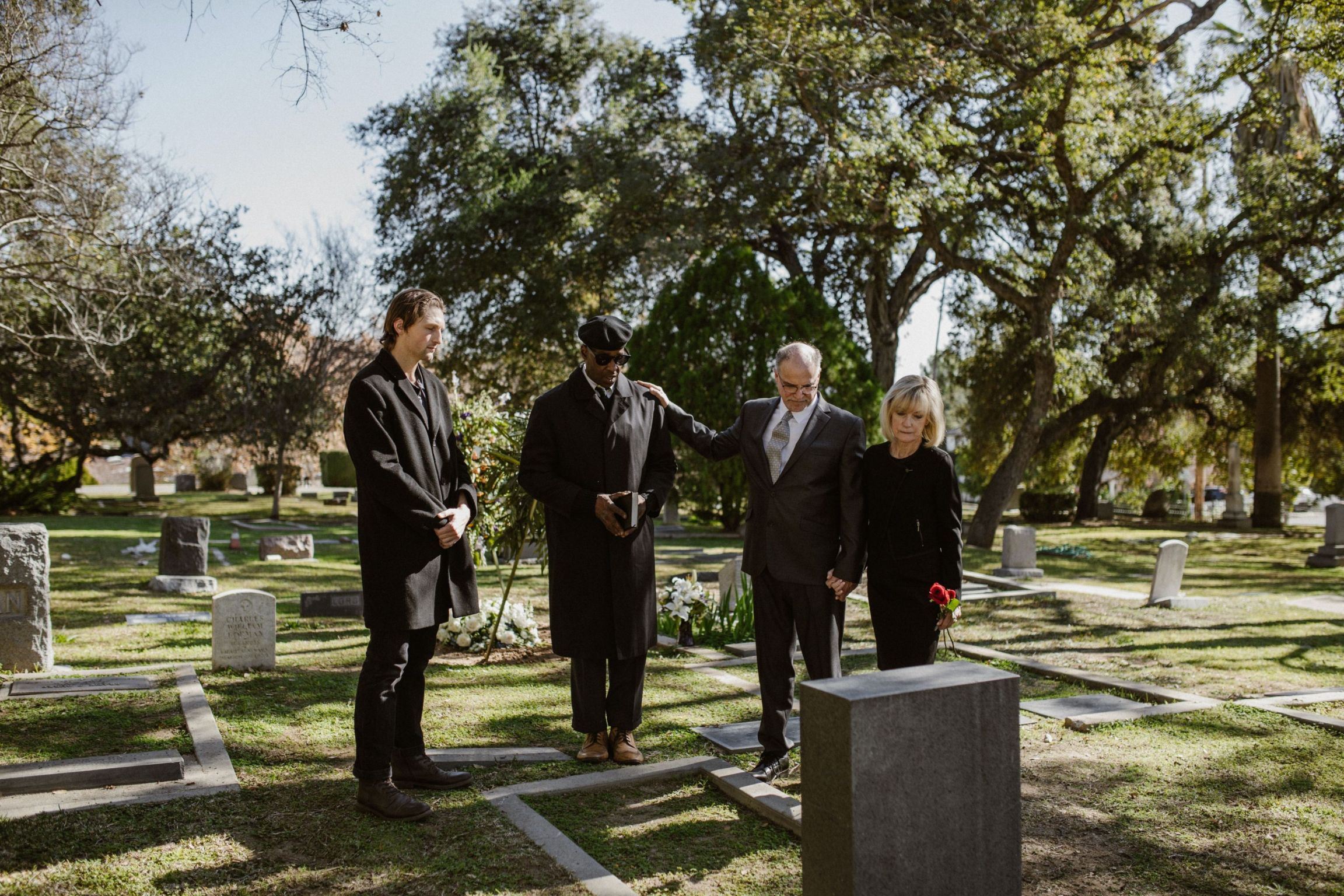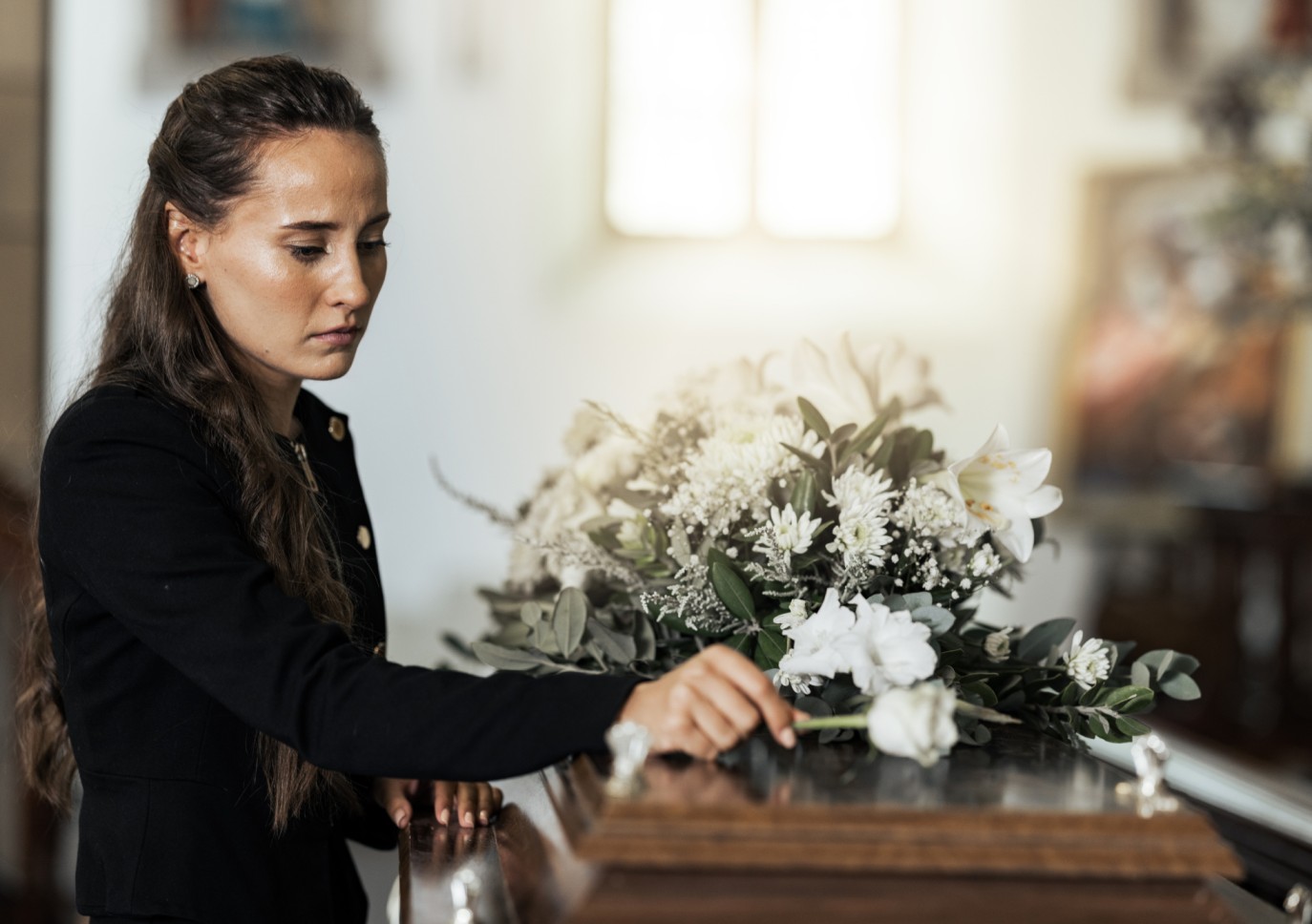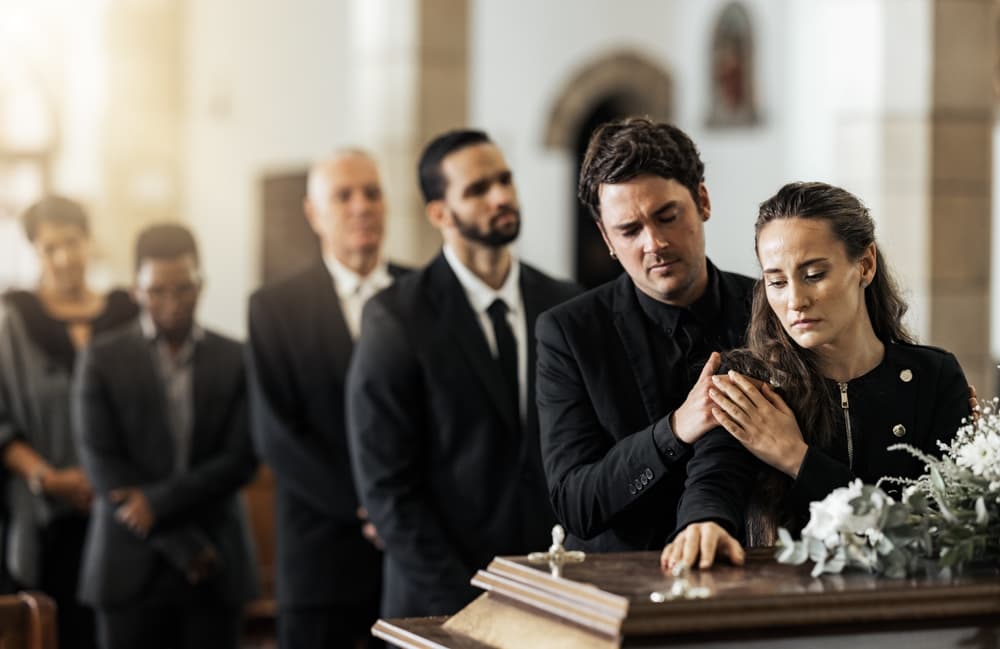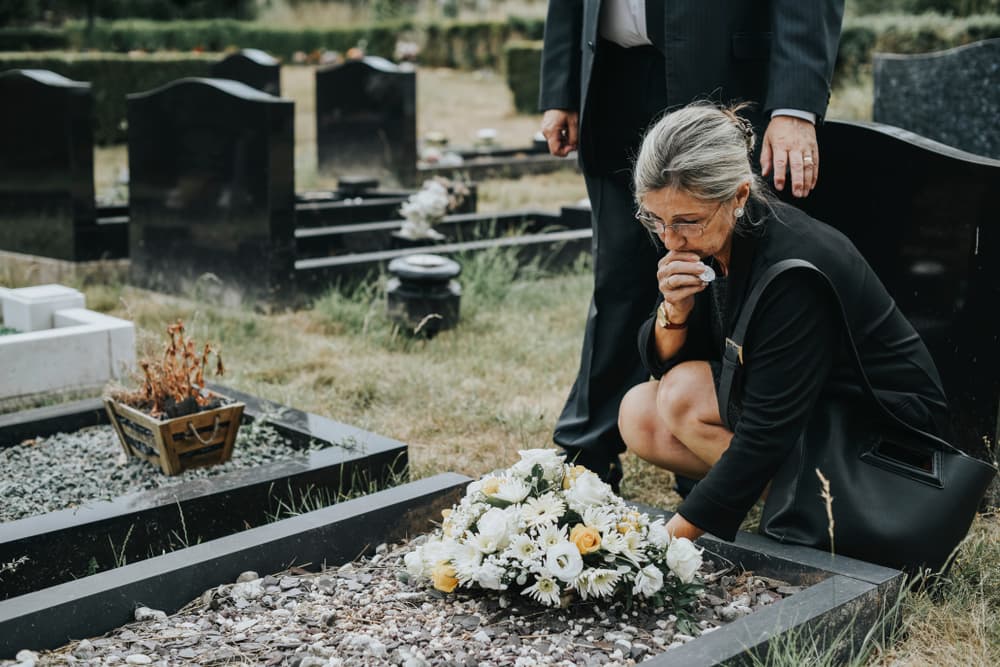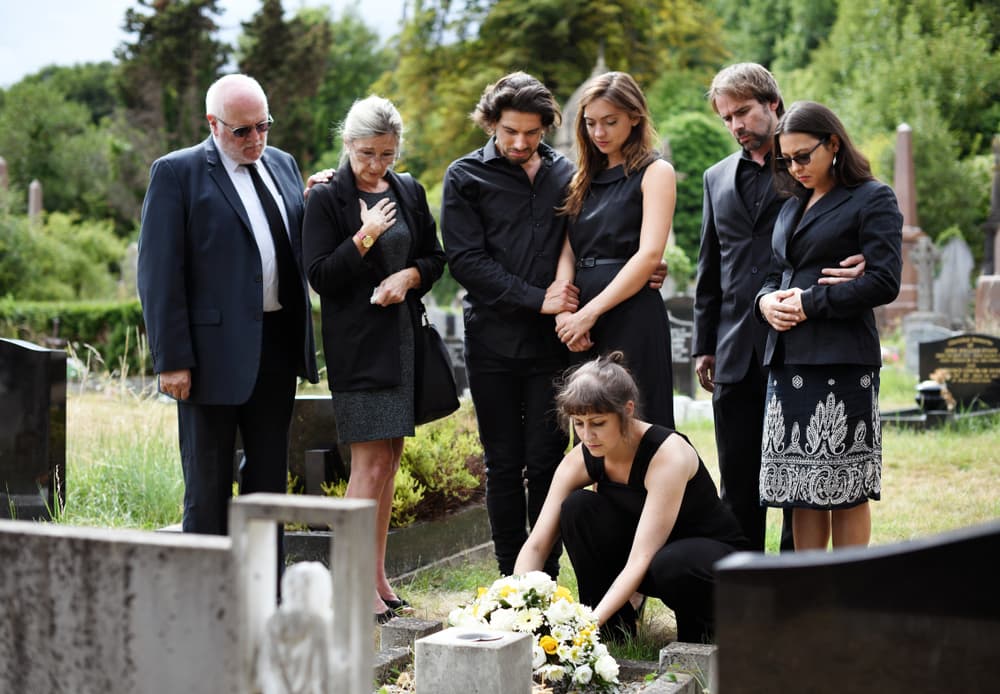Understanding funeral etiquette is not only important for knowing what to do and how to behave at a funeral, but it also shows your support for the deceased and their family. This comprehensive guide to funeral etiquette will prepare you for the day and give you some idea of what to expect.
What to Wear to a Funeral
If in doubt, stick with standard funeral wear which is plain, dark, formal clothing, preferably black. Black resembles a time of mourning and you want your outfit to be as understated as possible while looking smart in the presence of grieving loved ones.
You should not wear bright colors or clothing with loud patterns unless the invitation to the funeral says you should wear something specific like the deceased’s favorite color. Wearing colorful items otherwise can be seen as trying to draw attention to yourself when the day is supposed to be about the recently departed. Formal attire like blazers, shirts, and below-knee-length pencil skirts are appropriate items of clothing and in line with correct funeral etiquette.
Should You Bring Children
Children are mostly more than welcome to attend a funeral, provided they are well-behaved and quiet during the funeral service. Keep in mind that some children may find it hard to sit still in a funeral service, and they may become restless thus disrupting the proceedings.
Be prepared for the family of the deceased to request children under a certain age be left at home. In this case, it’s important to respect the family’s wishes and make alternative arrangements for your children.
If children are welcome, you need to prepare them for the funeral and ensure they understand what the event is about, the basics of funeral etiquette, and ensure they are emotionally prepared for the day. In this instance, consider the relationship your children had with the departed and make a decision from there.
Write a Sympathy Card
In most cases, it’s more than appropriate to bring cards or letters expressing sympathy to the funeral. These are good ways to show close family and friends support and express your sincerest condolences to the family. Letters and cards are deeply personal, and there may not be enough opportunity on the day to fully offer your support. A card or letter will allow you to do this.
Don’t Put Your Emotions on the Griever
Often, close family and friends of the deceased will experience a lot of grief on the day. In this situation, they will need your suppor樂威壯 t, rather than you needing theirs. Be aware of the role you play at the funeral and try to offer your support where you can.
It’s against funeral etiquette to ask for support from the family on the day of the funeral and more fitting to put heavy emotions aside and be strong for those closest to the deceased.
Understand Funeral Service Etiquette
The service is only one part of the funeral, and the service is the most intimate part where those close to the deceased have the opportunity to say their final goodbyes on behalf of those in attendance.
At the service, you should be silent, unless called upon to speak. Your cell phone should be switched off, and you need to sit still for the duration of the service. There will be time after the service to speak to those you need to.

Know How to Offer Your Condolences
When paying your respects to the family or friends of the departed, remember to be sincere. When you offer your condolences, a little goes a long way. Simply saying “I’m sorry for your loss”, or “I am available to talk if you need me” are some phrases you can use that show your support.
It may also be appropriate to share a fond memory you may have of the deceased. This will make the bereaved family smile and remember the deceased in a positive light.
Where to Sit For the Funeral Service
Where you sit for a funeral depends on your relationship with the deceased and knowing where to sit is important. The first rows in the front of the altar are usually reserved for immediate family, and behind that for close friends.
If you wish to attend the funeral but did not know the deceased that well, it would be more appropriate to sit closer to the back of the service venue.
Be Aware of Your Surroundings
It’s vital to understand that a funeral is a celebration of the deceased’s life. The conversations you have on the day therefore should, mainly, surround the life of the person whose funeral it is. It’s inappropriate to speak about what’s going on in your personal life. Topics like your career, your kids, or any personal crises should not be spoken about. Instead, try to have conversations with others about how you knew the deceased or share memories about them with others. There is a time and a place for other conversations, but just be aware of the surroundings on the day.
What to Bring to A Funeral
When you attend a funeral, it may seem natural to bring flowers to show your support to the family and to pay your respects to the person who has recently passed. However, if you have received a guideline that reads “in lieu of flowers”, it is not appropriate to bring flowers.
Instead, the family may want you to bring a donation for a chosen charity or fund to honor the deceased life and legacy. It may also be religiously inappropriate to bring flowers. For example, Jewish funerals are somber events, and flowers are seen as disruptive to the mourning process.
Understand the End-of-life Circumstances
When you understand how the deceased passed away as well as the circumstances under which they did, it determines the appropriate behavior for a funeral. There will usually be a lot of emotion at funerals where the person died suddenly and unexpectedly and the family and close friends will find it much harder.
However, if the person had been sick for a long time and they are no longer suffering, it may be a slightly different atmosphere. Of course, it will still be a sad event and the family will still need your support. Here it may be appropriate to say things like “may he/she rest in peace and find happiness wherever they are”.
